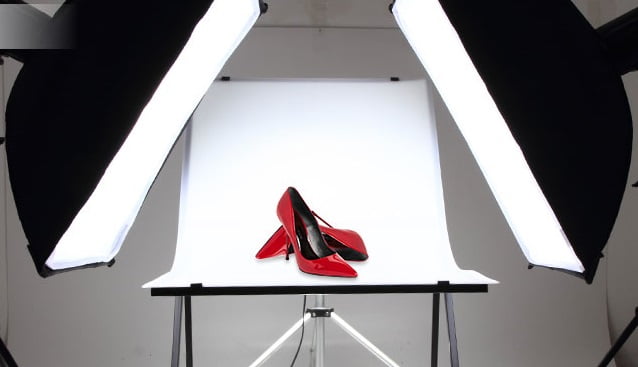Whether promoting a product, service or lifestyle, advertising photography is a critical tool aiming to capture attention, build brand identity and drive customer engagement. Let’s Golden Owl Digital explores the essence of photography for advertising, its standards, benefits and actionable strategies to optimize images for professional brand marketing.
| Key Takeaways: Photography for advertising is purpose-driven, designed to promote brands and engage audiences emotionally.High standards in composition, lighting and quality enhance brand recognition and trust.Strategic approaches like choosing the right photographer and optimizing for platforms maximize impact.Consistent, professional visuals drive engagement, conversions and long-term brand loyalty. |
What is Photography for Advertising? Key Features and Standards
Photography for business marketing sets the stage for impactful campaigns. Let’s break down its core components and standards.
Understanding Photography for Advertising
Photography for advertising is the art and practice of taking high-quality photographs designed specifically for marketing purposes. These images are used to promote products, services or brands and are crafted to connect with the target audience emotionally, convey the brand’s message and encourage action. Unlike casual photography, commercial photography is inherently strategic, every element serves the goal of selling or promoting.
Photography for advertising attracts and engages customers
Key Features of Photography for Advertising
Advertising photography thrives on distinct characteristics that ensure its effectiveness:
- Visual Appeal: Images must be striking and engaging to capture attention instantly in crowded digital or print spaces.
- Product Focus: The product or service takes center stage, ensuring clarity and prominence.
- Brand Alignment: Colors, styles and aesthetics reflect the brand’s identity, creating a cohesive look across campaigns.
- Emotional Impact: Photos evoke feelings that resonate with viewers and drive action, like a family enjoying a product to signal reliability.
- Storytelling: Effective images tell a story, placing products in relatable contexts that highlight their benefits, such as a laptop in a bustling startup office to suggest productivity.
Standards in Photography for Advertising
To achieve professional results, advertising photography adheres to rigorous standards:
- Composition: Techniques like the rule of thirds or leading lines guide the viewer’s eye, creating balanced, aesthetically pleasing images. A well-composed shot ensures the product stands out without distractions.
- Lighting: Proper lighting enhances mood, texture and depth. Soft natural light might convey freshness for a skincare brand, while dramatic studio lighting emphasizes luxury for jewelry.
- Consistency: Images must align with the brand’s established aesthetic, consistent colors, fonts and styles reinforce recognition.
- Quality: High-resolution photos ensure clarity and professionalism whether viewed on billboards or smartphone screens.
Images must meet layout standards
How These Standards Benefit Businesses
Adhering to high standards in photography for advertising delivers tangible advantages for businesses, strengthening their market presence and customer relationships.
- Increased Brand Recognition: Consistency in photography across advertising campaigns helps to strengthen brand identity and recognition. Think of Coca-Cola’s iconic red-and-white visuals, instantly recognizable worldwide.
- Higher Engagement: Visually compelling photos grab attention, boosting clicks, shares and interactions. According to HubSpot’s Facebook Marketing Guide, posts with images on Facebook receive 2.3 times more engagement compared to those without images (source)
- Improved Customer Trust: Professional advertising and product photography signals that you take your brand seriously.. A polished website with crisp product shots feels more trustworthy than one with blurry, amateur images.
- Effective Communication: Visuals convey messages faster than text. A single image of a cozy coffee shop can communicate warmth and community, connecting with customers instantly.
These benefits translate into stronger brand loyalty and higher conversions, making photography a worthwhile investment for businesses of all sizes.
Mentioning the colors red and white refers to the Coca Cola brand
Additional Information: Incorporating high-quality visuals in your advertising can be especially crucial in the early stages of a SaaS go-to-market strategy, where attracting attention and building brand recognition is key
Strategies for Creating High-Quality Photography for Advertising and Optimizing Images for Professional Brand Marketing
Photography style in branding requires deliberate planning and execution. Below are proven strategies to ensure your visuals captivate and convert:
Choosing the Right Photographer
Finding the right photographer is the first and most crucial step in executing successful advertising photography. Not all photographers are created equal, some excel in portraits, others in landscapes and some specialize in the nuances of commercial branding.
For advertising, it’s critical to hire someone who understands how to tell a story through imagery. Review portfolios and check if the photographer’s style matches your brand’s vibe. Do their past works feel aligned with your brand’s mood? Do they know how to light a product or model to make it appealing? These are essential questions.
The right photographer is key to success
Defining the Brand’s Visual Identity
Your brand’s visual identity is the soul of your advertising imagery. It’s not just about colors or logos, it’s how your brand “feels” when someone sees your visuals. Are you minimalist or bold? Modern or vintage? Luxurious or down-to-earth? The answer should be reflected in every photo you publish.
When defining your visual identity, consider your brand’s mission, values and audience. Use a detailed style guide that outlines everything—from the type of lighting to use, to angles, props, background setups and even the editing tone.
Shadows and a new background add depth to the perfume bottle
Focusing on Product and Customer Benefits
Effective advertising photography should do more than show the product — it should highlight its benefits and how it fits into the customer’s life. Use storytelling to place the product in relatable, real-life settings.
For example, rather than just displaying a coffee mug on a table, show it held in warm hands on a chilly morning. Instead of gym equipment in a warehouse, capture someone using it at home, sweaty and satisfied.
Lifestyle contexts help customers picture the product in their own lives, making it more compelling. Techniques like before-and-after shots, mood lighting and expressive emotions create a human connection that makes your photos truly irresistible.
Indoor jogging offers both relaxation and exercise
Optimize Composition and Lighting for Impact
Photography’s impact hinges on its composition and lighting. These two elements can transform a simple image into a visual masterpiece that grabs attention and stays memorable.
- Composition: The rule of thirds is a classic technique. This is to divide the image into three parts both vertically and horizontally and place the subject along those lines or their intersections. This creates balance and naturally guides the viewer’s eye. Symmetry, framing, leading lines and depth are other tools you can use to make your product shine.
- Lighting: This can set the mood, define the focus and bring the subject to life. Natural light is excellent for fresh, soft looks. For more dramatic, controlled environments, use studio lighting. Key lighting, rim lighting and diffusers help sculpt subjects and add a professional edge.
The rule of thirds is a classic technique
Post-Processing and Image Optimization for Different Platforms
After the shoot, image editing such as color correction, resize, crop and compress without losing quality is crucial for ensuring the photo aligns with the brand’s visual standards. Additionally, optimizing images for various advertising platforms (websites, social media, print) ensures they look great across different mediums.
Implementing Call-to-Action (CTA) in Photography
While CTAs are often associated with buttons or banners, photography for advertising can include visual CTAs that guide the viewer’s eye and prompt interaction. These cues can be subtle but powerful when integrated cleverly into your images.
For example, an arrow pointing toward a product feature, a person’s gaze leading to a sign-up button or even contrasting colors that highlight a special offer. A calendar in the background may hint at urgency.
The goal is to encourage viewers to take action such as click, buy, sign up, learn more,… without being overtly salesy. The CTA should feel like a natural part of the visual flow. This blend of aesthetics and functionality is what makes great advertising photography not just beautiful but effective.
The CTA button highlights the offer
Testing and Analyzing Performance
To know if your advertising photography works, you need to test, track and refine. Data-driven tweaks can transform good campaigns into great ones.
Start with A/B testing: run ads with small visual tweaks like different angles, lighting, compositions, colors or CTAs. Use tools like Google Analytics, Facebook Ads Manager or heat maps to gather insights such: Click-through rates (CTR); Conversion rates; Bounce rate; Time on page; Engagement (likes, shares, comments)
Regular analysis helps you spot patterns and improve future shoots. This makes your business better with each campaign.
Measure with A/B testing of images
Leveraging Photography for Advertising to Boost Professional Brand Marketing
Photography for advertising is more than aesthetics, it’s a strategic lever for building identity, attracting attention and driving sales. High-quality, well-composed images aligned with your brand’s values create lasting impressions, turning casual viewers into loyal customers. A small business with professional visuals can compete with industry giants, leveling the playing field.
Partner with a skilled photographer and adopt these best practices to craft campaigns that resonate. Whether launching a product or refreshing your brand, strategic photography sets you apart in a crowded market.
Last Thoughts
The power of photography for advertising lies in its ability to blend artistry with strategy, creating visuals that captivate, communicate and convert. At Golden Owl Digital, we’re passionate about helping businesses harness this potential through tailored visual solutions that deliver results.
Ready to elevate your brand? Contact Golden Owl Digital today to transform your marketing with stunning, purpose-driven photography in 2025.







